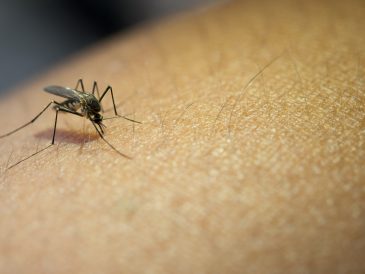Psoriasis is a chronic autoimmune disease that causes the overproduction of skin cells. The most common form, plaque psoriasis, appears as raised, red patches covered with a silvery white buildup of dead skin cells. Psoriasis can occur on any part of the body, but most often appears on the scalp, knees, elbows and lower back.
Psoriasis is not contagious and cannot be passed from one person to another. However, the exact cause of psoriasis is unknown. It is believed to be the result of a combination of genetic and environmental factors.
There are four main types of psoriasis:
1. Plaque Psoriasis – The most common form, plaque psoriasis appears as raised, red patches covered with a silvery white buildup of dead skin cells. It can occur on any part of the body, but is most often found on the scalp, knees, elbows and lower back.
2. Guttate Psoriasis – This form of psoriasis appears as small, red dots on the skin. It is often triggered by a bacterial infection such as strep throat.
3. Inverse Psoriasis – Inverse psoriasis appears as red, shiny patches in the folds of the skin such as the armpits, groin or under the breasts. It is often aggravated by friction and sweating.
4. Pustular Psoriasis – Pustular psoriasis appears as white blisters filled with pus surrounded by red skin. It can be generalized or localized to certain areas such as the hands or feet.
Psoriasis can vary in severity from a few scattered patches to complete body coverage. The symptoms may come and go, or they may be constant. Some people with psoriasis have only minor annoying symptoms while others suffer from severe pain and disability.
The most common symptom of all forms of psoriasis is itching. The itching can range from mild to severe and can be very painful. Other symptoms include:
• Redness
• Swelling
• Burning or stinging sensation
• Dryness and cracking of the skin
• Bleeding from the cracks in the skin
• Thickened, pitted or ridged nails
• Changes in hair texture or color
Causes of Psoriasis
Psoriasis is a chronic skin condition that causes the skin to thicken and develop scaly patches. It can occur on any part of the body, but is most commonly found on the scalp, elbows, knees, and lower back. Psoriasis is not contagious and cannot be passed from person to person. The exact cause of psoriasis is unknown, but it is believed to be a combination of genetic and environmental factors.
Psoriasis occurs when the body’s immune system mistakenly attacks healthy skin cells. This causes the skin cells to grow and divide at an accelerated rate. The excess skin cells form thick, scaly patches on the surface of the skin. The most common type of psoriasis, plaque psoriasis, is characterized by these scaly patches.
Psoriasis is a chronic condition, which means it can last for years or even a lifetime. There is no cure for psoriasis, but there are treatments that can help to control the symptoms. Treatment options include topical creams and ointments, oral medications, light therapy, and biologic drugs.
The best way to manage psoriasis is to work with a team of healthcare professionals who are experienced in treating the condition. If you have psoriasis, it’s important to be proactive in your own care and to learn as much as you can about the condition. There are many resources available to help you better understand psoriasis and its treatment options.
How to Cure Psoriasis?
If you’re one of the 7.5 million Americans living with psoriasis, you know this chronic skin condition can be not only physically uncomfortable but also emotionally draining. The good news is that there are a number of ways to treat psoriasis and improve your quality of life.
Topical treatments like corticosteroids, retinoids, calcipotriene, and coal tar can help to reduce the inflammation and itching associated with psoriasis. These can be applied directly to the affected areas of skin. Be sure to follow your doctor’s instructions when using these treatments.
Ultraviolet (UV) light therapy is another option that can be used to treat psoriasis. UV light helps to slow the growth of skin cells and can be administered in a doctor’s office or at home with a special light device.
If your psoriasis is more severe, you may need to take oral or injected medications like methotrexate, cyclosporine, or biologics. These help to reduce inflammation throughout the entire body and can be very effective in treating psoriasis. However, they can also have serious side effects, so it’s important to talk to your doctor about the risks and benefits before starting any of these medications.
In addition to medical treatments, there are also a number of home remedies that can help to relieve the symptoms of psoriasis. These include:
– Soaking in a warm bath with colloidal oatmeal or Epsom salt – Applying a moisturizer immediately after bathing to lock in moisture – Using a humidifier in your home to keep the air moist – Exposing your skin to small amounts of sunlight each day – Avoiding triggers like stress, smoke, and alcohol
Making some simple lifestyle changes can also help to improve your psoriasis. Eating a healthy diet, getting regular exercise, and reducing stress are all important in managing this condition.
If you’re living with psoriasis, know that you’re not alone. There are many resources available to help you manage your condition and improve your quality of life. Talk to your doctor about the best treatment options for you and don’t hesitate to reach out for support if you’re struggling emotionally. With the right treatment plan, you can find relief from your symptoms and take back control of your life.




